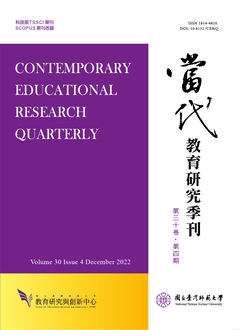

高等教育機構排名已成為全球現象,為了讓自己國家的大學進入前100名,許多國家投入上億經費進行重點投資,我國也不例外──以五年五百億計畫,期望在10年內至少有1所大學躋身國際一流大學。但這樣的投資是否足以達成進入世界百大的目的?本文以群集世界一流大學最多的美國為例,選擇全球兩大排名系統合計排名前10名的公私立大學,分析這些一流大學的財務收入、支出及人力資源,以瞭解要成為國際一流大學需要多少經費?一流大學的經費是否都來自政府?一流大學又是如何使用經費?並以我國獲得五年五百億獎助最多的公私立大學──國立臺灣大學與私立長庚大學做為比較對象,反省我國躋身國際一流大學應有的作為。
根據研究資料發現,美國公私立一流大學年總收入與支出都非常優渥,每一位學生享受的資源是其就讀一般大學的5倍以上;而這些一流大學獲得的政府經費主要是透過競爭機制的補助與簽約金,而非依賴政府撥款;也因為豐盈的經費,其教學人力與支援團隊也遠非其他大學所能望其項背。我國頂尖大學與美國公私立一流大學比較,無論在財力或人力部分,都只能用「困窘」來形容,本文因此提出五項建議,做為我國教育部與大學在提升國際競爭力之參考。畢竟,為躋身國際一流大學,相關財務策略是關鍵因素,而回歸大學辦學理念,則更是不可忽略的重要課題。
Rankings of higher education institutions are becoming a global phenomenon. Many countries have invested billions of dollars to have their own universities became so-called "world-class universities." Taiwan is not an exception. Ministry of Education has decided to invest NT$10 billion each year to universities in the hope that they will become world-class universities in 10 years. This paper takes the top 10 private and public world-class universities in the US, according to the ranking from "Academic Ranking of World University" of Shanghai Jiao Tong University and "World University Rankings" of the Times Higher Education Supplement, as the benchmark to investigate how much money will be needed in order to become a world-class university. Where do these world-class universities revenue come from? How do these universities spend their money? These are the questions to answer in this paper.
This paper finds that revenue and expenditure in these US top universities are extremely high. Most of their government revenue comes from grants and contracts, not from allocation. Their teaching force and supporting staff are much better than those in normal universities. Compared with resources in these world-class universities in the US, Taiwan's top universities are quite poor. This paper thus suggests 5 recommendations for Taiwan's government and universities on the way to becoming world-class universities.

本著作係採用創用 CC 姓名標示-非商業性 3.0 台灣 授權條款授權.
本刊國立台灣師範大學教育研究與創新中心
106台北市和平東路一段162號 | 電話: 02-7749-3670 | E-mail: cerecerq@gmail.com
教創中心 | 師大 | 電子報 | 線上投審系統
本刊由國家科學及技術委員會人文社會科學研究中心補助經費
© 2014 CERI-NTNU
